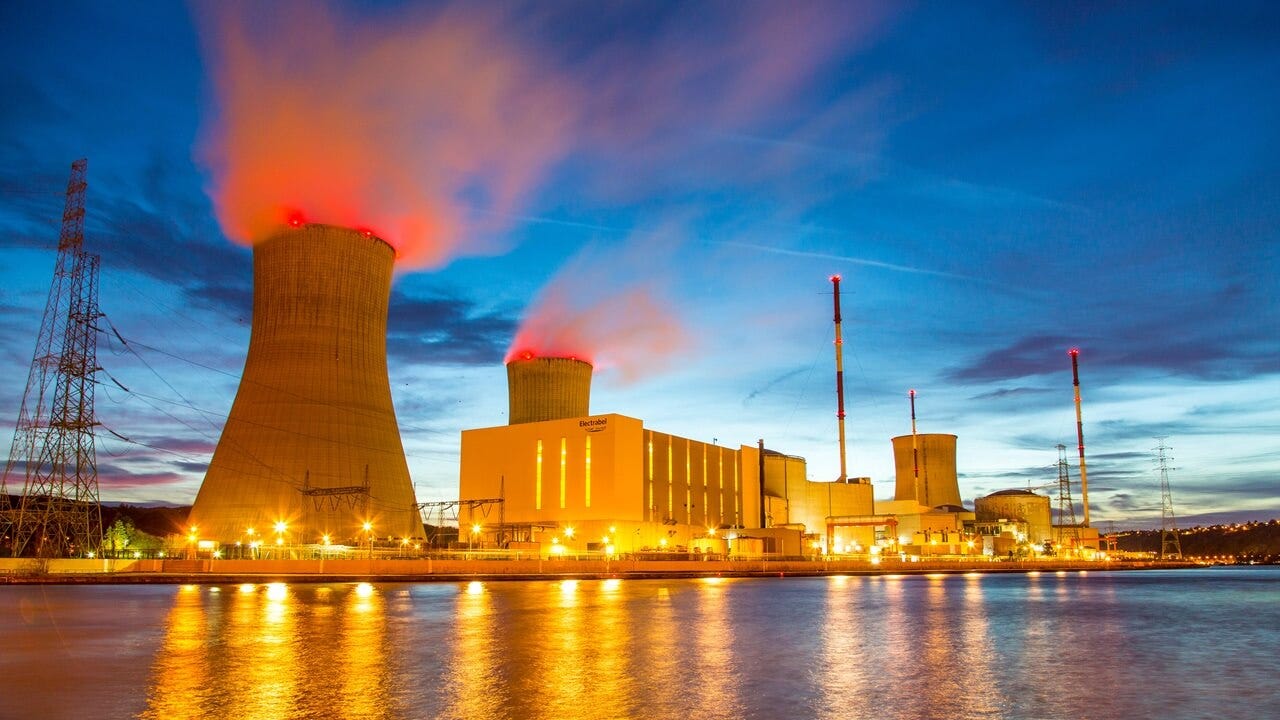WWW.INFORMATIONWEEK.COM
Why AI Will Drive Demand for Nuclear Power Plants
John Edwards, Technology Journalist & AuthorMay 9, 20254 Min ReadJochen Tack via Alamy Stock PhotoAs AI adoption grows exponentially, power demand is expected to skyrocket. With electrical grids already straining to meet current needs, it appears that nuclear energy may be the only way to supply the power needed to accommodate AI technology quickly and at an affordable cost. Energy scarcity has been an issue for a while; the proliferation of artificial intelligence just helped amplify it, says Andy Roehr, managing director of the energy practice at accounting and advisory firm Baker Tilly. "To address the gaps in the energy grid, people have looked to nuclear power because it's a form of reliable clean energy that can handle large energy demands," he explains in an email interview. As AI continues to expand, so does the need for reliable and high-capacity energy, observes Gilbert Michaud, an assistant professor of environmental policy at Loyola University Chicago. "Data centers have a huge demand for electricity and require consistent and uninterrupted power," he says in an online interview. "Nuclear facilities provide cheap, stable, baseload power that's a zero-emissions asset." Michaud adds that small module reactors are also showing promise as cost-effective solutions versus building large-scale plants. "These reactors could provide localized power that could reduce the strain on the grid." Related:Potential Benefits of Going Nuclear Nuclear's immediate benefits include a reliable power source to meet AI's growing, energy-intensive demands, reduced carbon emissions, and local economic development, Michaud says. "In the longer term, energy affordability, security, and more widespread decarbonization will be the key benefits." Depending on its location, a nuclear facility can offer an availability guarantee over three times that of intermittent renewables, such as wind and solar power, Roehr says. "Data centers have very high uptime requirements, with some customers asking energy providers for 99.9999% availability guarantees," he notes. "Nuclear has the additional advantage of qualifying for a range of possible tax credits that can, over a period of 10 years, pay for all or a significant percentage of the facility." Additionally, nuclear plants can provide a high reliability energy resource needed by grid management authorities to address concerns created by the replacement of reliable baseload energy with intermittent and distributed resources. Suitable Locations for Power Sources Most nuclear plants will be located in places near high energy demand, and with strong regulatory support and incentives, Michaud says. "Places like Northern Virginia, California, and Texas will likely see new nuclear energy projects. We may also see development near military sites or places with retired coal-fired power plants, he notes. Related:Approximately 65 reactors are currently under construction in 15 countries, and about 90 more planned worldwide, says Joteep Mahato, global head for energy and utilities at digital engineering and consulting firm Nagarro. "The choice of location will finally depend on factors like proximity to power demand centers -- especially data centers for AI -- available infrastructure, the regulatory environment, and government/local support," he explains in an email interview. The timeline for building nuclear power plants is about 10 to 15 years, starting from initial planning to operation, Mahato says. "However, recent advancements in construction techniques are significantly reducing these timelines." New industrial approaches, such as modular construction and design standardization, are streamlining the process with the potential to reduce overall project durations. "That said, regulatory processes, funding, and public acceptance still remain critical factors to consider." Final Thoughts Related:AI data centers are only one part of the increasing demand for power. "A shift to electric transportation, policies to replace natural gas heat with electric heat pumps, industrial decarbonization mandates, reshoring of heavy industrial manufacturing, green fuel production, hydrogen production -- all of these are driving a level of forecast load on the US grid that's unprecedented," Roehr says. For many of these new loads, including data centers, service interruption simply isn't acceptable, since shutdowns can damage equipment, destroy work in process and even injure workers. "For AI data center planning teams, nuclear provides the idea of a high availability energy option, but is not quite here," he states. "This creates a need for a bridged energy strategy and for setting clear expectations with energy providers around costs, benefits sharing, and performance." As energy demand increases and the nuclear landscape evolves, we need to consider critical factors like public perception, safety, and regulatory modernizations, Mahato says. "It will be critical for government, tech companies, and advanced research institutes to join hands in advancing this technology in order to make it furtherly viable and economically scalable," he states. "Lastly, it's also valuable to recognize that AI technology itself could accelerate nuclear innovation [by] optimizing reactor designs, enhancing safety, streamlining regulatory aspects, improving waste management, and enabling predictive and prescriptive maintenance for plants." Access to reliable, clean energy is probably the biggest factor in AI growth, Michaud says. "Nuclear is a great option to meet this demand in the short term." About the AuthorJohn EdwardsTechnology Journalist & AuthorJohn Edwards is a veteran business technology journalist. His work has appeared in The New York Times, The Washington Post, and numerous business and technology publications, including Computerworld, CFO Magazine, IBM Data Management Magazine, RFID Journal, and Electronic Design. He has also written columns for The Economist's Business Intelligence Unit and PricewaterhouseCoopers' Communications Direct. John has authored several books on business technology topics. His work began appearing online as early as 1983. Throughout the 1980s and 90s, he wrote daily news and feature articles for both the CompuServe and Prodigy online services. His "Behind the Screens" commentaries made him the world's first known professional blogger.See more from John EdwardsReportsMore ReportsNever Miss a Beat: Get a snapshot of the issues affecting the IT industry straight to your inbox.SIGN-UPYou May Also Like
